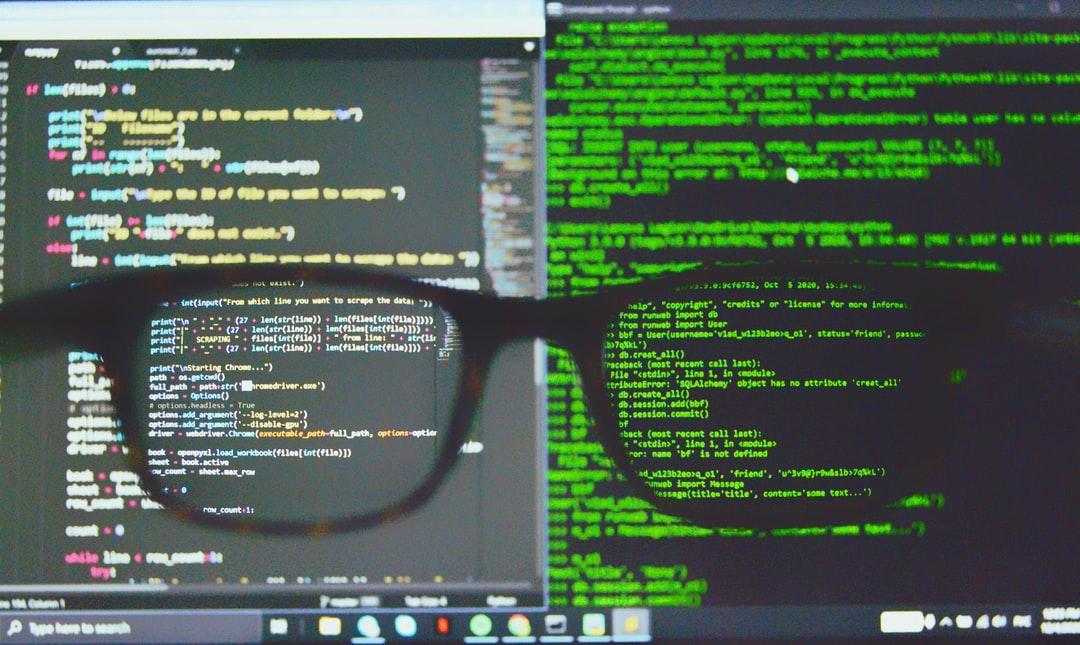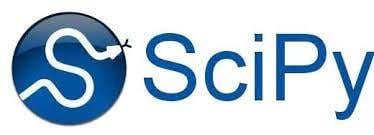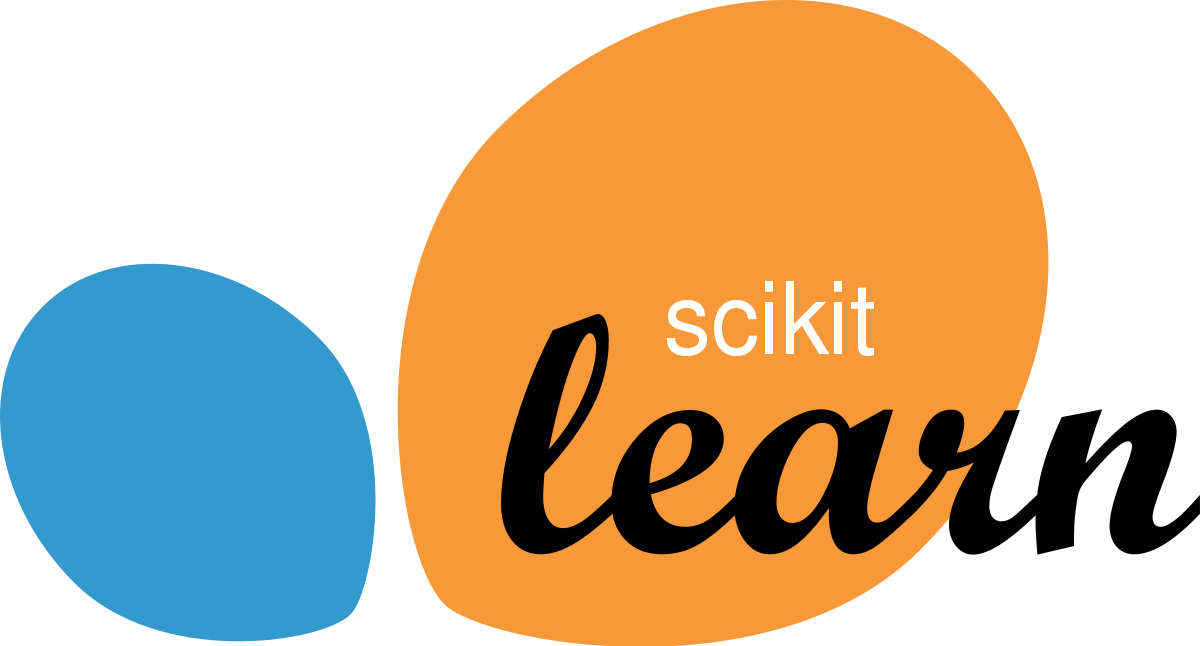Ever since its creation in February of 1991, Python has slowly but steadily become the fifth most used programming language in the 2020s. This success is often attributed to its high efficiency compared with other mainstream programming languages, as well as its English-like commands and syntax, which make it easy to learn and use even for absolute coding beginners.
One of Python’s most beneficial yet most-overlooked features is its plethora of open-source libraries. They can be used in everything from data science and visualization to image and data manipulation. In more recent years, however, several Python libraries have carved an undeniable presence in the world of machine learning (ML) and deep learning (DL).
Why Is Python Preferred for Machine Learning?

In addition to its low-level entry and specialized code libraries, Python is incredibly versatile and flexible, which enables it to be used alongside other programming languages as needed. Also, it can operate on almost every OS and platform out there.
It has packages that significantly cut down on the work required to implement deep neural networks and machine learning algorithms. Additionally, Python is an object-oriented programming (OOP) language, which is essential for efficient data use and categorization—an essential part of every machine learning process.
The Best Python Libraries for Machine Learning
When it comes to machine learning and deep learning projects written in Python, there are thousands of libraries to pick and choose from. However, they’re not all on the same level of code quality, diversity, or size. To help you choose, here are the best Python libraries for machine learning and deep learning.
1. NumPy

NumPy is an open-source numerical and popular Python library. It can be used to perform a variety of mathematical operations on arrays and matrices. It’s one of the most used scientific computing libraries, and it’s often used by scientists for data analysis. Additionally, its ability to process multidimensional arrays—handling linear algebra and Fourier transformation—makes it ideal for machine learning and artificial intelligence (AI) projects.
Compared with regular Python lists, NumPy arrays require significantly less storage area. They’re also much faster and more convenient to use than the former. NumPy allows you to manipulate the data in the matrix and to transpose and reshape it. Compiled, Numpy’s capabilities help you improve the performance of your machine learning model without much hassle.
2. SciPy

SciPy is a free and open-source library that’s based on NumPy. It can be used to perform scientific and technical computing on large sets of data. Similar to NumPy, SciPy comes with embedded modules for array optimization and linear algebra. It’s considered a foundational Python library due to its critical role in scientific analysis and engineering.
SciPy depends greatly on NumPy for its array manipulation subroutines and includes all of NumPy’s functions. However, it adds to them to make them full-fledged scientific tools that are still user-friendly.
SciPy is ideal for image manipulation and provides basic processing features of non-scientific high-level mathematical functions. It’s easy to use and fast to execute. It also includes high-level commands that play a role in data visualization and manipulation.
3. Scikit-Learn

Based on NumPy and SciPy, scikit-learn is a free Python library that’s often considered a direct extension of SciPy. It was specifically designed for data modeling and developing machine learning algorithms, both supervised and unsupervised.
Thanks to its simple, intuitive, and consistent interface, scikit-learn is both beginner and user-friendly. Although the use of scikit-learn is limited because it only excels in data modeling, it does an excellent job at allowing users to manipulate and share data however they need.
4. Theano

Theano is a numerical computation Python library made specifically for machine learning. It allows for efficient definition, optimization, and evaluation of mathematical expressions and matrix calculations to employ multidimensional arrays to create deep learning models. It’s a highly specific library and almost exclusively used by ML and DL developers and programmers.
Theano supports integration with NumPy, and when used with a graphics processing unit (GPU) rather than a central processing unit (CPU), it performs data-intensive computations 140 times faster. Additionally, Theano has built-in validation and unit testing tools to avoid bugs and errors later on in the code.
5. TensorFlow

TensorFlow is a free and open-source Python library that specializes in differentiable programming. The library offers a collection of tools and resources that help make building DL and ML models and neural networks straightforward for beginners and professionals. TensorFlow’s architecture and framework are flexible and allow it to run on several computational platforms such as CPU and GPU. However, it performs its best when working on a tensor processing unit (TPU).
TensorFlow can be used to implement reinforcement-learning in ML and DL models and allows you to directly visualize your machine learning models with its built-in tools. TensorFlow isn’t limited to working on desktop devices. It lets you create and train smart models on servers and smartphones.
6. Keras

Keras is an open-source Python library designed for developing and evaluating neural networks within deep learning and machine learning models. It can run on top of Theano and TensorFlow, making it possible to start training neural networks with a little code. The Keras library is modular, flexible, and extensible, making it beginner- and user-friendly. It also offers a fully functioning model for creating neural networks as it integrates with objectives, layers, optimizers, and activation functions.
Keras framework is flexible and portable, allowing it to operate in multiple environments and work on both CPUs and GPUs. It allows for fast and efficient prototyping, research work, and data modeling and visualization. Keras also has one of the widest ranges when it comes to data types because it can work on text images and images to train models.
7. PyTorch

PyTorch is an open-source machine learning Python library that’s based on the C programming language framework, Torch. PyTorch qualifies as a data science library and can integrate with other similar Python libraries such as NumPy. It’s able to seamlessly create computational graphs that can be changed anytime while the Python program is running. It’s mainly used in ML and DL applications such as computer vision and natural language processing.
PyTorch is known for its high speeds of execution even when it’s handling heavy and extensive graphs. It’s also highly flexible, which allows it to operate on simplified processors in addition to CPUs and GPUs. PyTorch comes with a collection of powerful APIs that lets you expand on the PyTorch library, as well as a natural language toolkit for smoother processing. It’s compatible with Python’s IDE tools, which makes for an easy debugging process.
8. Pandas

Pandas is a data science and analysis Python library that allows developers to build intuitive and seamless high-level data structures. Built on top of NumPy, Pandas is responsible for preparing data sets and points for machine training. Pandas uses two types of data structures, one-dimensional (series) and two-dimensional (DataFrame), which, together, allow Pandas to be used in a variety of sectors, from science and statistics to finance and engineering.
The Pandas library is flexible and can be used in tandem with other scientific and numerical libraries. Its data structures are easy to use because they’re highly descriptive, quick, and compliant. With Pandas, you can manipulate data functionality by grouping, integrating, and re-indexing it using minimal commands.
9. Matplotlib

Matplotlib is a data visualization library that’s used for making plots and graphs. It’s an extension of SciPy and is able to handle NumPy data structures as well as complex data models made by Pandas. Although its expertise is limited to 2D plotting, Matplotlib can produce high-quality and publish-ready diagrams, graphs, plots, histograms, error charts, scatter plots and bar charts.
Matplotlib is intuitive and easy to use, making it a great choice for beginners. It’s even easier to use for people with preexisting knowledge in various other graph-plotting tools. It offers GUI toolkit support, including wxPython, Tkinter, and Qt.
10. Beautiful Soup

Beautiful Soup is a Python package used for web scraping and data collection that parses XML and HTML documents and prepares them for manipulation. It creates a parse tree for all the parsed pages of a website that can then be used to seamlessly extract the web content’s data from HTML. Thanks to its versatility and the type of data it’s able to scrape, Beautiful Soup is used by data scientists and analysts as well as by ML and DL developers looking for data to train their programs.
Beautiful Soup is incredibly fast and efficient at doing its job and doesn’t require extensive hardware resources to function. It’s extremely lenient and works with a variety of websites and encoded data types. Beautiful Soup is easy to use even for absolute Python beginners thanks to its simplistic code, comprehensive documentation, and active online community.
11. Scrapy

Scrapy is a free and open-source web scraping Python library. It’s designed for large-scale web scraping. It comes included with all the tools needed to extract data from websites and process them into use-ready states. In addition to web scraping and crawling, Scrapy also allows you to use APIs to extract data directly from websites that offer it.
One of Scrapy’s biggest advantages is its incredible data scraping speeds in relation to its efficient CPU and memory use. Scrapy’s spiders make parallel requests to the website and don’t have a long wait line. In addition to being easily extendable, Scrapy is extremely beginner- and user-friendly thanks to its strong community of developers and sufficient documentation.
12. Seaborn

Seaborn is an open-source data visualization and plotting Python library. It’s based on the plotting library Matplotlib and includes the extensive data structures of Pandas. On its own, Seaborn provides a high-level and feature-heavy interface to draw accurate and informative statistical graphs. It’s used in ML and DL projects because of its ability to generate sensible plots of learning and execution data.
Seaborn produces the most visually appealing and attractive graphs and plots, making it perfect for use in publications and marketing. Additionally, Seaborn allows you to create extensive graphs with little code and simple commands, so it can help save time and effort on your behalf.
13. PyCaret

PyCaret is an open-source Python machine learning library that’s based on the Caret machine learning library written in R. PyCaret offers features that automate and simplify standard practices and ML programs. It allows ML developers to spot-check a myriad of standard ML and DL algorithms on a classification or regression data set with a single command.
PyCaret is moderately easy to use even though there’s a learning curve. It’s important to note that PyCaret is low-code, which makes it a low-energy and efficient library to use. In addition to its ability to compare different machine learning models for you, PyCaret has simple commands or basic data processing and feature engineering.
14. OpenCV

OpenCV is a library consisting of various programming functions, which makes it useful for real-time computer vision programs. It’s able to process a variety of visual inputs from image and video data and identify objects, faces, and handwriting.
OpenCV was designed with computational efficiency in mind. The library takes full advantage of its multicore processing functions to allow for a strong focus on real-time data processing in applications. It also has a supportive and active online community that keeps it going.
15. Caffe

Caffe is an open-source deep-learning library and framework that’s written in C++ with a Python interface. Caffe stands for Convolutional Architecture for Fast Feature Embedding. It has valuable applications in academic research and startup prototyping and large-scale, industrial applications in AI, computer vision, and multimedia.
Caffe has an expressive architecture, allowing you to define and optimize your models without relying on complex code. It also allows for smooth switching between CPUs and GPUs, training machines on a GPU, and then deploying them on a variety of devices and environments. Caffe has the capacity to process over 60 million images per day, making it perfect for undetermined experiments and scaled industry deployment.
Get To Know Other Data Science Students
Ginny Zhu
Data Science Intern at Novartis
Diana Xie
Machine Learning Engineer at IQVIA
Joy Opsvig
Data Science Apprentice Engineer at LinkedIn
Benefits of Using Python
Whether it’s for machine learning and deep learning or other modern data applications, there are many benefits to choosing Python as your only, or primary, coding language.
Free and Open-Source
Python is an open-source programming language that’s completely free to install and use in a variety of ecosystems. It’s also continuously evolving and improving. The Python used today is the third evolution of the Python released in the 1990s.
Large and Active Online Community
Python has one of the largest online communities. That means that you’re rarely alone when coding with Python. You can share any problem or difficulty you may face with the online community and receive replies and suggested solutions from countless other Python coders.
Portable
With Python, there’s no need to change your code to run your software on a different OS or device to have it work as intended.
Easy To Debug
Python is an interpreted language, meaning the code is executed line-by-line in a specific order. The program would only stop if it executes the final line of code or encounters an error. If the program stops because of an error, you’ll receive a report informing you that an error has occurred. The report will provide its precise location and its general cause.
External Library Support
There are over 130,000 Python libraries filled with millions of lines of ready-to-use code and commands. Using those resources can save you time and energy because the code has already been written for you and has been checked for errors.
Where To Start When Selecting a Python Library?

When starting a Python project, it can be nearly impossible to choose from one of over 100,000 libraries that are available. You may feel a sense of decision paralysis and end up reinventing the wheel even though the code you need is already out there in a library.
When selecting a library for your Python project, it’s important to have the primary field of the project determined, as well as any additional specialties or fields that intercept. For instance, if you’re planning on working on a machine learning project, you may also need to use libraries made for data management as you’ll need massive amounts of raw, structured, or semi-structured data to train your machine.
The next step is making sure you’re not using outdated and incompatible libraries. If you’re going to use the latest version of Python, make sure your libraries of choice are all compatible with each other and with the version of Python you plan on using. You also need to make sure that the libraries you’ve decided on are either free to use or within your budget for the project.
Machine Learning Python Library FAQs
What Is the Best Python Library for Machine Learning?
There’s no one best Python library for machine learning, but that doesn’t mean that some libraries aren’t better than others in certain fields. The best library is the one that meets your project’s requirements and that you feel comfortable using.
How Do Python Libraries Work?
Python libraries are a collection of code and functions that represent the core of the Python programming language in a particular area. They work by being imported into the main Python framework and joining other Python functions, allowing you to call and use the new functions without having to program them.
Companies are no longer just collecting data. They’re seeking to use it to outpace competitors, especially with the rise of AI and advanced analytics techniques. Between organizations and these techniques are the data scientists – the experts who crunch numbers and translate them into actionable strategies. The future, it seems, belongs to those who can decipher the story hidden within the data, making the role of data scientists more important than ever.
In this article, we’ll look at 13 careers in data science, analyzing the roles and responsibilities and how to land that specific job in the best way. Whether you’re more drawn out to the creative side or interested in the strategy planning part of data architecture, there’s a niche for you.
Is Data Science A Good Career?
Yes. Besides being a field that comes with competitive salaries, the demand for data scientists continues to increase as they have an enormous impact on their organizations. It’s an interdisciplinary field that keeps the work varied and interesting.
10 Data Science Careers To Consider
Whether you want to change careers or land your first job in the field, here are 13 of the most lucrative data science careers to consider.
Data Scientist
Data scientists represent the foundation of the data science department. At the core of their role is the ability to analyze and interpret complex digital data, such as usage statistics, sales figures, logistics, or market research – all depending on the field they operate in.
They combine their computer science, statistics, and mathematics expertise to process and model data, then interpret the outcomes to create actionable plans for companies.
General Requirements
A data scientist’s career starts with a solid mathematical foundation, whether it’s interpreting the results of an A/B test or optimizing a marketing campaign. Data scientists should have programming expertise (primarily in Python and R) and strong data manipulation skills.
Although a university degree is not always required beyond their on-the-job experience, data scientists need a bunch of data science courses and certifications that demonstrate their expertise and willingness to learn.
Average Salary
The average salary of a data scientist in the US is $156,363 per year.
Data Analyst
A data analyst explores the nitty-gritty of data to uncover patterns, trends, and insights that are not always immediately apparent. They collect, process, and perform statistical analysis on large datasets and translate numbers and data to inform business decisions.
A typical day in their life can involve using tools like Excel or SQL and more advanced reporting tools like Power BI or Tableau to create dashboards and reports or visualize data for stakeholders. With that in mind, they have a unique skill set that allows them to act as a bridge between an organization’s technical and business sides.
General Requirements
To become a data analyst, you should have basic programming skills and proficiency in several data analysis tools. A lot of data analysts turn to specialized courses or data science bootcamps to acquire these skills.
For example, Coursera offers courses like Google’s Data Analytics Professional Certificate or IBM’s Data Analyst Professional Certificate, which are well-regarded in the industry. A bachelor’s degree in fields like computer science, statistics, or economics is standard, but many data analysts also come from diverse backgrounds like business, finance, or even social sciences.
Average Salary
The average base salary of a data analyst is $76,892 per year.
Business Analyst
Business analysts often have an essential role in an organization, driving change and improvement. That’s because their main role is to understand business challenges and needs and translate them into solutions through data analysis, process improvement, or resource allocation.
A typical day as a business analyst involves conducting market analysis, assessing business processes, or developing strategies to address areas of improvement. They use a variety of tools and methodologies, like SWOT analysis, to evaluate business models and their integration with technology.
General Requirements
Business analysts often have related degrees, such as BAs in Business Administration, Computer Science, or IT. Some roles might require or favor a master’s degree, especially in more complex industries or corporate environments.
Employers also value a business analyst’s knowledge of project management principles like Agile or Scrum and the ability to think critically and make well-informed decisions.
Average Salary
A business analyst can earn an average of $84,435 per year.
Database Administrator
The role of a database administrator is multifaceted. Their responsibilities include managing an organization’s database servers and application tools.
A DBA manages, backs up, and secures the data, making sure the database is available to all the necessary users and is performing correctly. They are also responsible for setting up user accounts and regulating access to the database. DBAs need to stay updated with the latest trends in database management and seek ways to improve database performance and capacity. As such, they collaborate closely with IT and database programmers.
General Requirements
Becoming a database administrator typically requires a solid educational foundation, such as a BA degree in data science-related fields. Nonetheless, it’s not all about the degree because real-world skills matter a lot. Aspiring database administrators should learn database languages, with SQL being the key player. They should also get their hands dirty with popular database systems like Oracle and Microsoft SQL Server.
Average Salary
Database administrators earn an average salary of $77,391 annually.
Data Engineer
Successful data engineers construct and maintain the infrastructure that allows the data to flow seamlessly. Besides understanding data ecosystems on the day-to-day, they build and oversee the pipelines that gather data from various sources so as to make data more accessible for those who need to analyze it (e.g., data analysts).
General Requirements
Data engineering is a role that demands not just technical expertise in tools like SQL, Python, and Hadoop but also a creative problem-solving approach to tackle the complex challenges of managing massive amounts of data efficiently.
Usually, employers look for credentials like university degrees or advanced data science courses and bootcamps.
Average Salary
Data engineers earn a whooping average salary of $125,180 per year.
Database Architect
A database architect’s main responsibility involves designing the entire blueprint of a data management system, much like an architect who sketches the plan for a building. They lay down the groundwork for an efficient and scalable data infrastructure.
Their day-to-day work is a fascinating mix of big-picture thinking and intricate detail management. They decide how to store, consume, integrate, and manage data by different business systems.
General Requirements
If you’re aiming to excel as a database architect but don’t necessarily want to pursue a degree, you could start honing your technical skills. Become proficient in database systems like MySQL or Oracle, and learn data modeling tools like ERwin. Don’t forget programming languages – SQL, Python, or Java.
If you want to take it one step further, pursue a credential like the Certified Data Management Professional (CDMP) or the Data Science Bootcamp by Springboard.
Average Salary
Data architecture is a very lucrative career. A database architect can earn an average of $165,383 per year.
Machine Learning Engineer
A machine learning engineer experiments with various machine learning models and algorithms, fine-tuning them for specific tasks like image recognition, natural language processing, or predictive analytics. Machine learning engineers also collaborate closely with data scientists and analysts to understand the requirements and limitations of data and translate these insights into solutions.
General Requirements
As a rule of thumb, machine learning engineers must be proficient in programming languages like Python or Java, and be familiar with machine learning frameworks like TensorFlow or PyTorch. To successfully pursue this career, you can either choose to undergo a degree or enroll in courses and follow a self-study approach.
Average Salary
Depending heavily on the company’s size, machine learning engineers can earn between $125K and $187K per year, one of the highest-paying AI careers.
Quantitative Analyst
Qualitative analysts are essential for financial institutions, where they apply mathematical and statistical methods to analyze financial markets and assess risks. They are the brains behind complex models that predict market trends, evaluate investment strategies, and assist in making informed financial decisions.
They often deal with derivatives pricing, algorithmic trading, and risk management strategies, requiring a deep understanding of both finance and mathematics.
General Requirements
This data science role demands strong analytical skills, proficiency in mathematics and statistics, and a good grasp of financial theory. It always helps if you come from a finance-related background.
Average Salary
A quantitative analyst earns an average of $173,307 per year.
Data Mining Specialist
A data mining specialist uses their statistics and machine learning expertise to reveal patterns and insights that can solve problems. They swift through huge amounts of data, applying algorithms and data mining techniques to identify correlations and anomalies. In addition to these, data mining specialists are also essential for organizations to predict future trends and behaviors.
General Requirements
If you want to land a career in data mining, you should possess a degree or have a solid background in computer science, statistics, or a related field.
Average Salary
Data mining specialists earn $109,023 per year.
Data Visualisation Engineer
Data visualisation engineers specialize in transforming data into visually appealing graphical representations, much like a data storyteller. A big part of their day involves working with data analysts and business teams to understand the data’s context.
General Requirements
Data visualization engineers need a strong foundation in data analysis and be proficient in programming languages often used in data visualization, such as JavaScript, Python, or R. A valuable addition to their already-existing experience is a bit of expertise in design principles to allow them to create visualizations.
Average Salary
The average annual pay of a data visualization engineer is $103,031.
Resources To Find Data Science Jobs
The key to finding a good data science job is knowing where to look without procrastinating. To make sure you leverage the right platforms, read on.
Job Boards
When hunting for data science jobs, both niche job boards and general ones can be treasure troves of opportunity.
Niche boards are created specifically for data science and related fields, offering listings that cut through the noise of broader job markets. Meanwhile, general job boards can have hidden gems and opportunities.
Online Communities
Spend time on platforms like Slack, Discord, GitHub, or IndieHackers, as they are a space to share knowledge, collaborate on projects, and find job openings posted by community members.
Network And LinkedIn
Don’t forget about socials like LinkedIn or Twitter. The LinkedIn Jobs section, in particular, is a useful resource, offering a wide range of opportunities and the ability to directly reach out to hiring managers or apply for positions. Just make sure not to apply through the “Easy Apply” options, as you’ll be competing with thousands of applicants who bring nothing unique to the table.
FAQs about Data Science Careers
We answer your most frequently asked questions.
Do I Need A Degree For Data Science?
A degree is not a set-in-stone requirement to become a data scientist. It’s true many data scientists hold a BA’s or MA’s degree, but these just provide foundational knowledge. It’s up to you to pursue further education through courses or bootcamps or work on projects that enhance your expertise. What matters most is your ability to demonstrate proficiency in data science concepts and tools.
Does Data Science Need Coding?
Yes. Coding is essential for data manipulation and analysis, especially knowledge of programming languages like Python and R.
Is Data Science A Lot Of Math?
It depends on the career you want to pursue. Data science involves quite a lot of math, particularly in areas like statistics, probability, and linear algebra.
What Skills Do You Need To Land an Entry-Level Data Science Position?
To land an entry-level job in data science, you should be proficient in several areas. As mentioned above, knowledge of programming languages is essential, and you should also have a good understanding of statistical analysis and machine learning. Soft skills are equally valuable, so make sure you’re acing problem-solving, critical thinking, and effective communication.
Since you’re here…Are you interested in this career track? Investigate with our free guide to what a data professional actually does. When you’re ready to build a CV that will make hiring managers melt, join our Data Science Bootcamp which will help you land a job or your tuition back!






